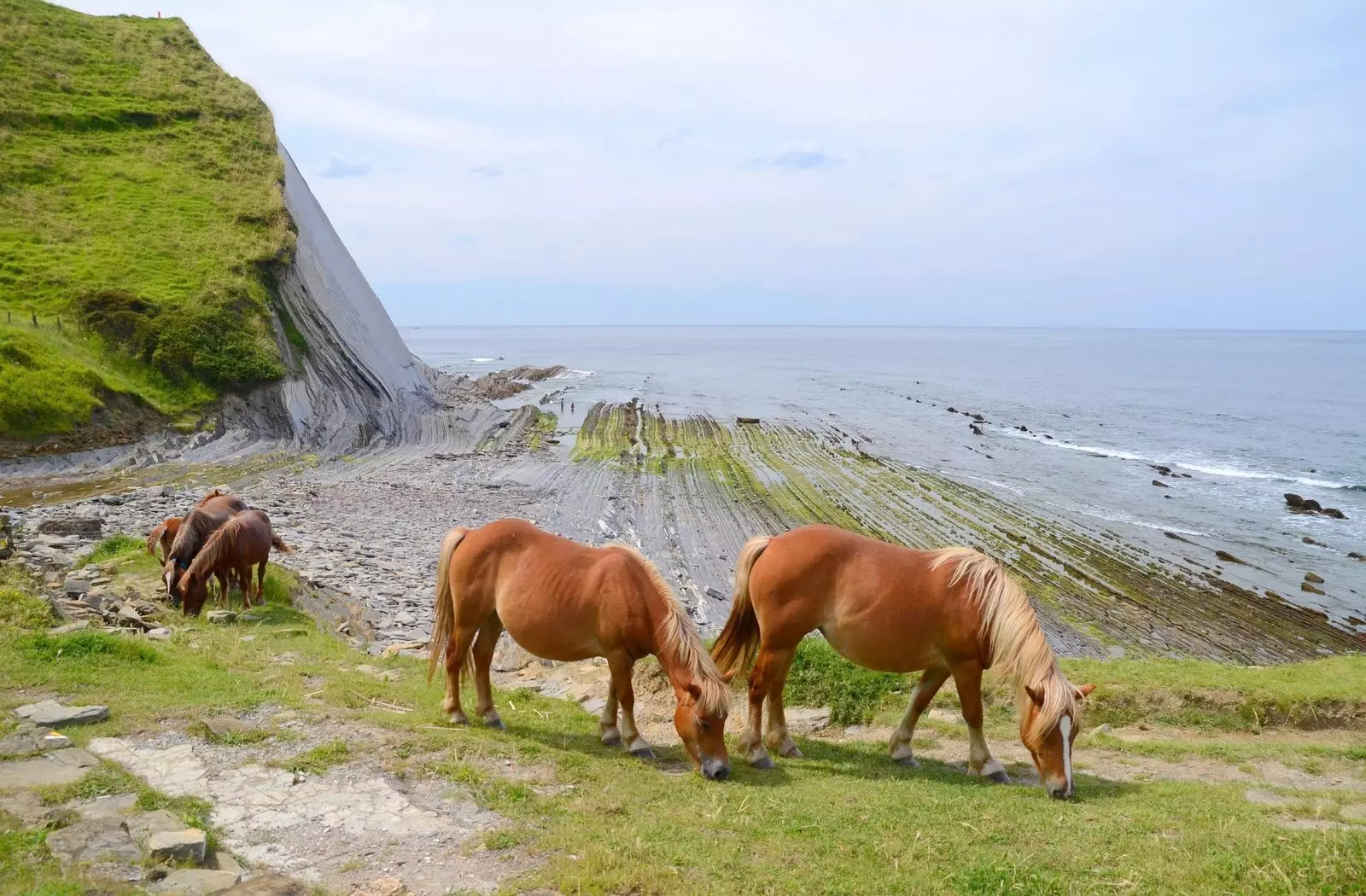
A paradise between Ondárroa and Zumaia
The history of Basque Coast Geopark , located between the towns of Deba and Zumaia , begins 120 million years ago. Back then, the current Basque Country was a shallow sea of warm waters that had large coral reefs.
A sea between Iberian and Eurasian continental plates, Little by little, they began to separate. The seabed began to sink as Iberia and Europe got closer, and the animals that inhabited its waters, ammonites, marine dinosaurs and prehistoric sharks, They began to abandon them.
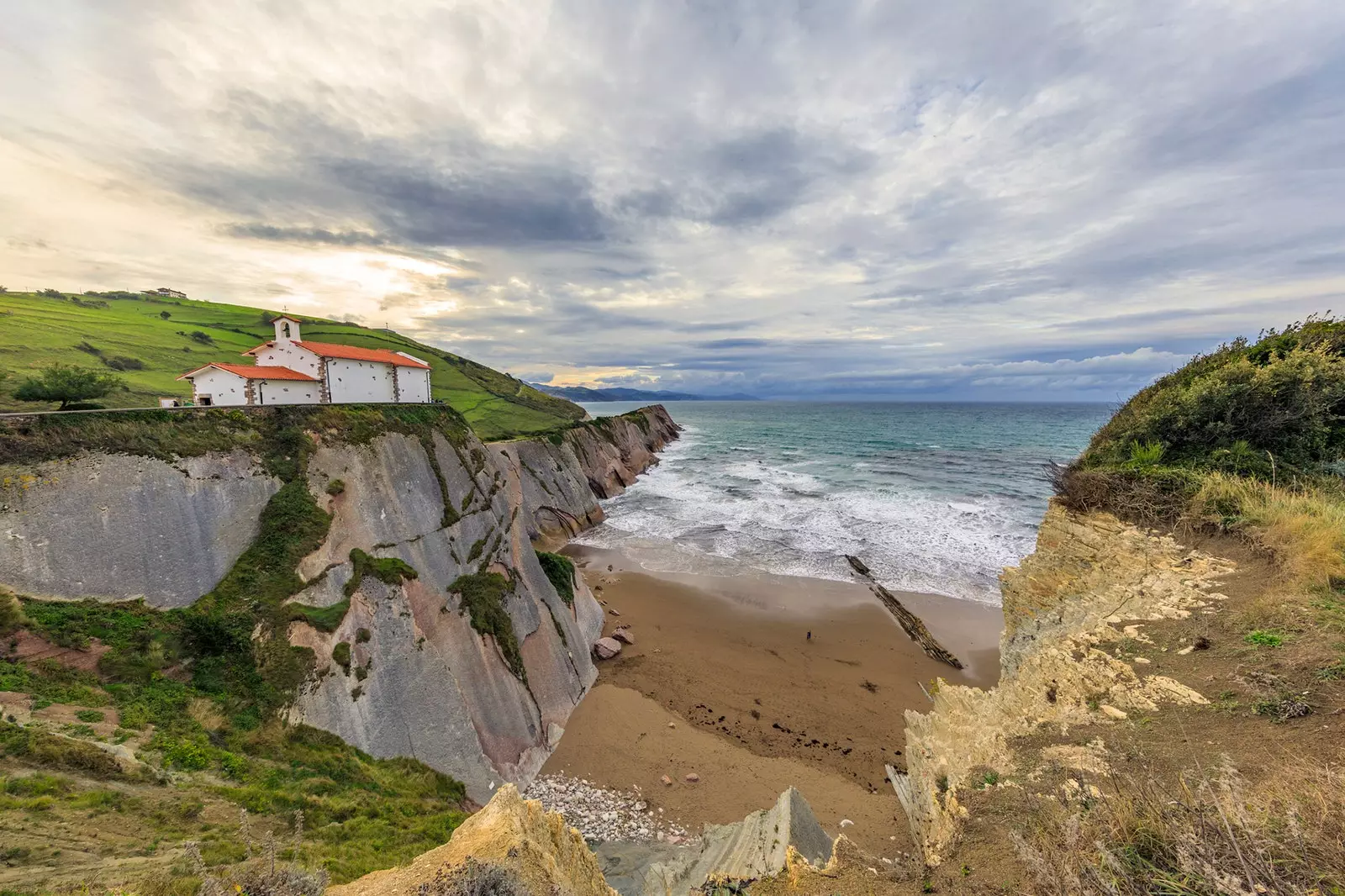
Punta de Algorri and the cinematographic hermitage of San Telmo
They were only left behind bones and large shells , which deposited at the bottom of the sea, They indicated the changes that were to come.
Millions of years later, sixty specifically, the Iberian plate, pushed by the African , undoes the path and approaches Eurasia, colliding during 20 million years until giving rise to the Pyrenees and the Cantabrian Mountains.
Ammonite fossils deposited in the sea beds rise to the surface , and reach the top of the mountains that sprout thanks to the thrust of the plates. The Mutriku Mountains , the town with the largest number of ammonite finds, They were then underwater.
until, ago 40 million years , the thrust of the plates ceases, and another battle begins that lasts to this day: that of the ocean against the land.
SAKONETA: GEOLOGICAL BATTLEFIELD
Low rain-laden clouds cover the hills, hiding from view the white farmhouses that, to splashes between forest and cliff , spread throughout the Basque Coast Geopark.
The road that leads to Sakoneta viewpoint It is intricate, since it runs very close to the edge of the cliff, but reaching its end is worth it. Over a mount whose walls die directly in the sea you can enjoy the spectacle of an eternal battle.
40 million years ago that the Bay of Biscay fights to gain ground from the coast, and the land is obstinate in not give up an inch of ground.
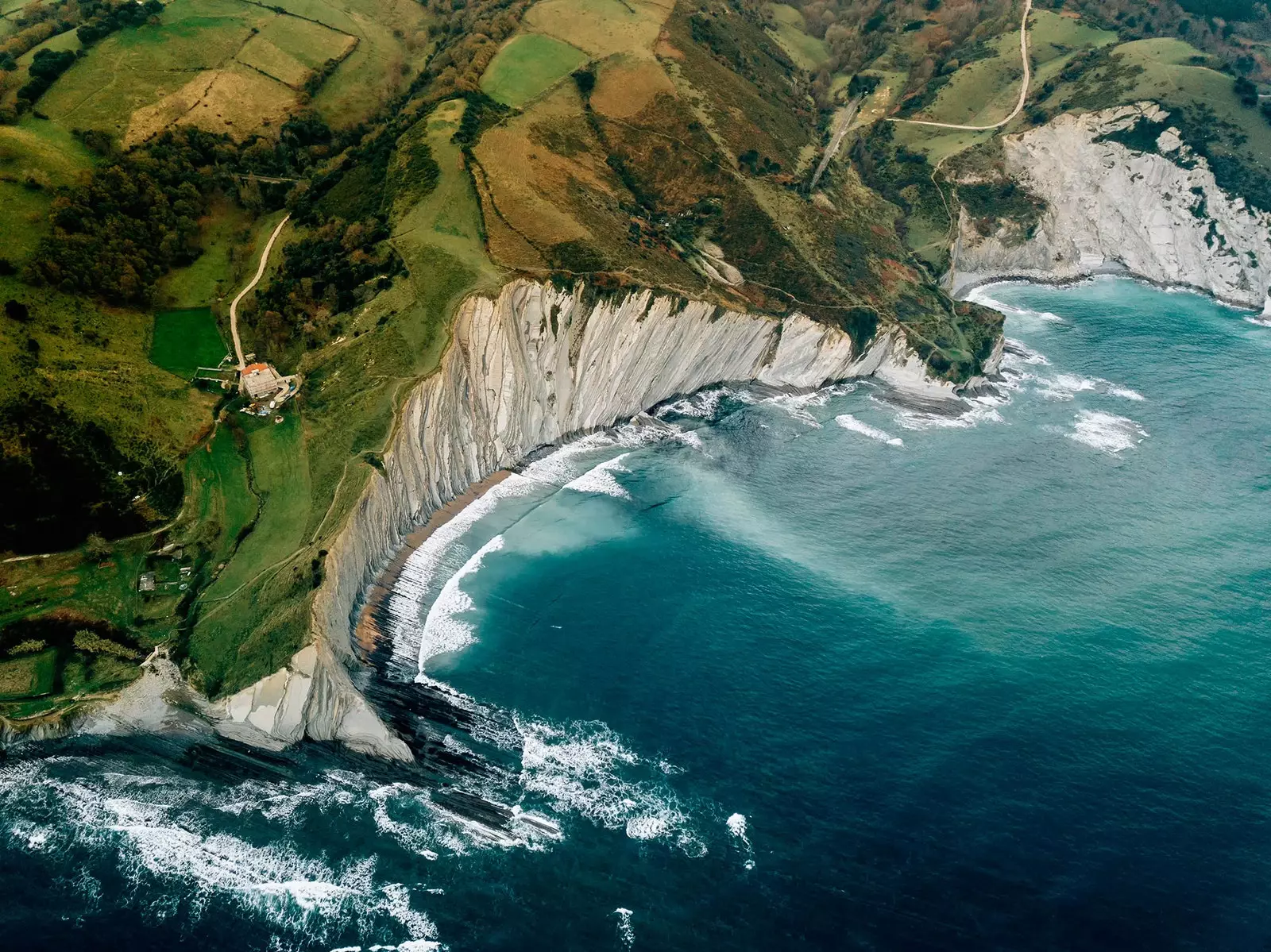
Sakoneta Beach
The result is a chain of cliffs whose rocks acquire capricious forms, chiselled by the erosive action of the sea and the wind. Large tidal flats jut out into the sea, the land resisting being engulfed under the waters, while the waves rise, splinter by splinter, the rock which he now turns into statues.
the flysch show, strata layers (marl, limestone and sandstone) canonically aligned, makes these cliffs look like a kind of overturned stairs, a rocky puff, and a sort of barcode.
The flysch not only inspires far-fetched parallels: the international community of geologists and geographers recognizes the flysch present in the Basque Coast Geopark What a unique model in the world.
ZUMAIA: THE BATTLE CONTINUES
The scar on the earth that represents the flysch acquires its maximum splendor in Zumaia, seafaring town of historical and cinematographic renown , known to all for hosting the film's final wedding Eight Basque surnames.
The Hermitage of San Telmo It is located precisely on the outcrops of flysch, in a place where the coastal erosion process that we could already notice from the Sakoneta viewpoint.
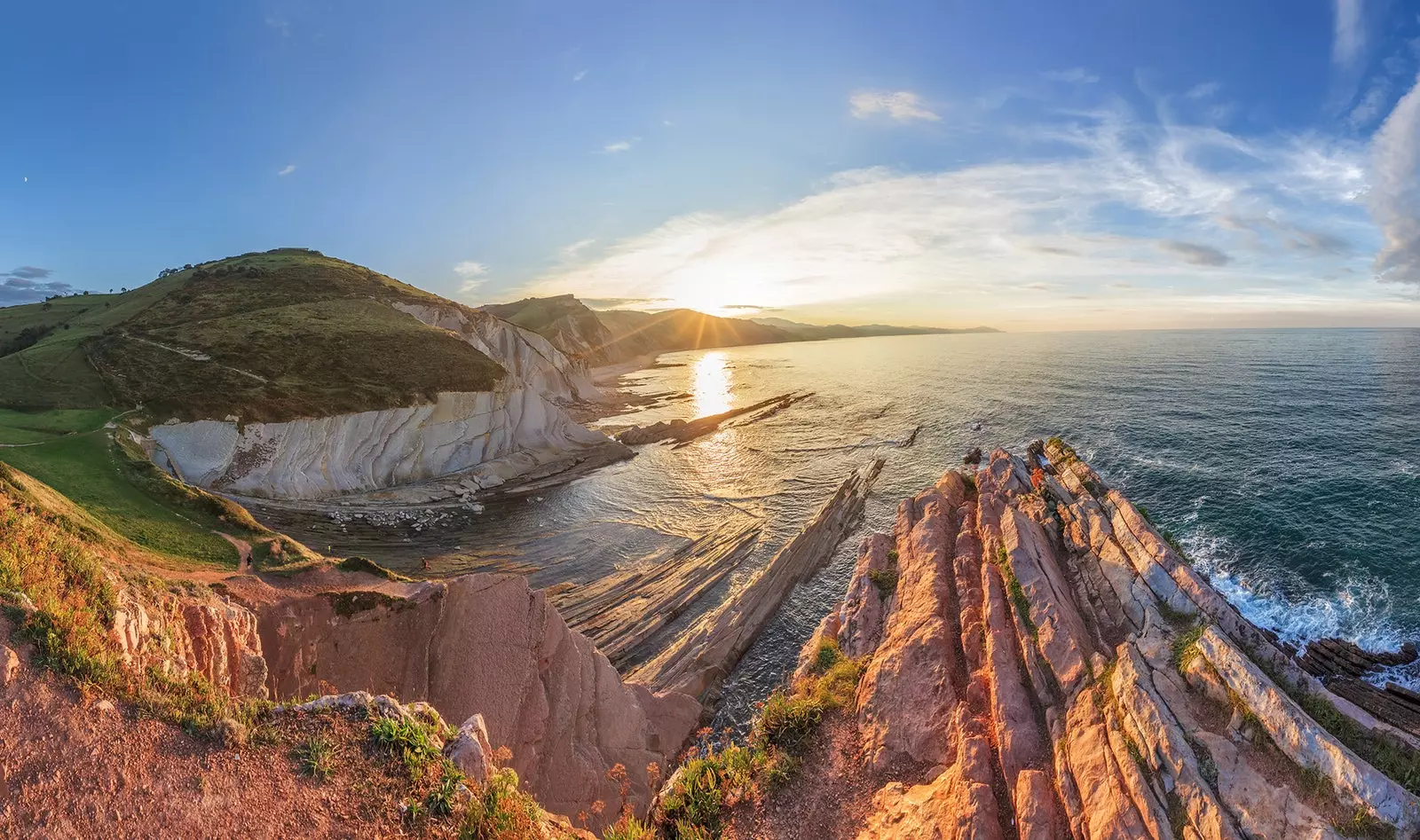
Geological paradise is closer than you thought
The continual beating of the sea against the base of the cliffs causes the fall of huge boulders which, in turn, are pushed by the waves against the rock from which they once fell. When the cliff recedes, expose the tidal flat the calls too "rock slabs" causing waves highly appreciated by surfers.
The particularity of Zumaia is that the different stages of erosion described are perfectly visible and distinguishable, creating an open-air museum of geological history.
The cliffs that surround the beach and the hermitage of San Telmo overwhelm the visitor, not only because of their height, but also because of the textures that they seem to produce the flysch in contrast to the meadows and the waves that surround you. is usual meet geologists, geographers and curious people from all over Europe who come to date and observe a unique phenomenon.
And also, to regain strength in Zumaia thanks to the tasty crab and prawn pintxos who serve in Goiko Bodegoia (Erribera Kalea, 9).
A ROAD OVER THE WAVES
Although there are viewpoints such as Sakoneta or privileged places to observe the coast such as the cliffs of Zumaia, the truth is that the geopark show reach your best version watching from a boat.
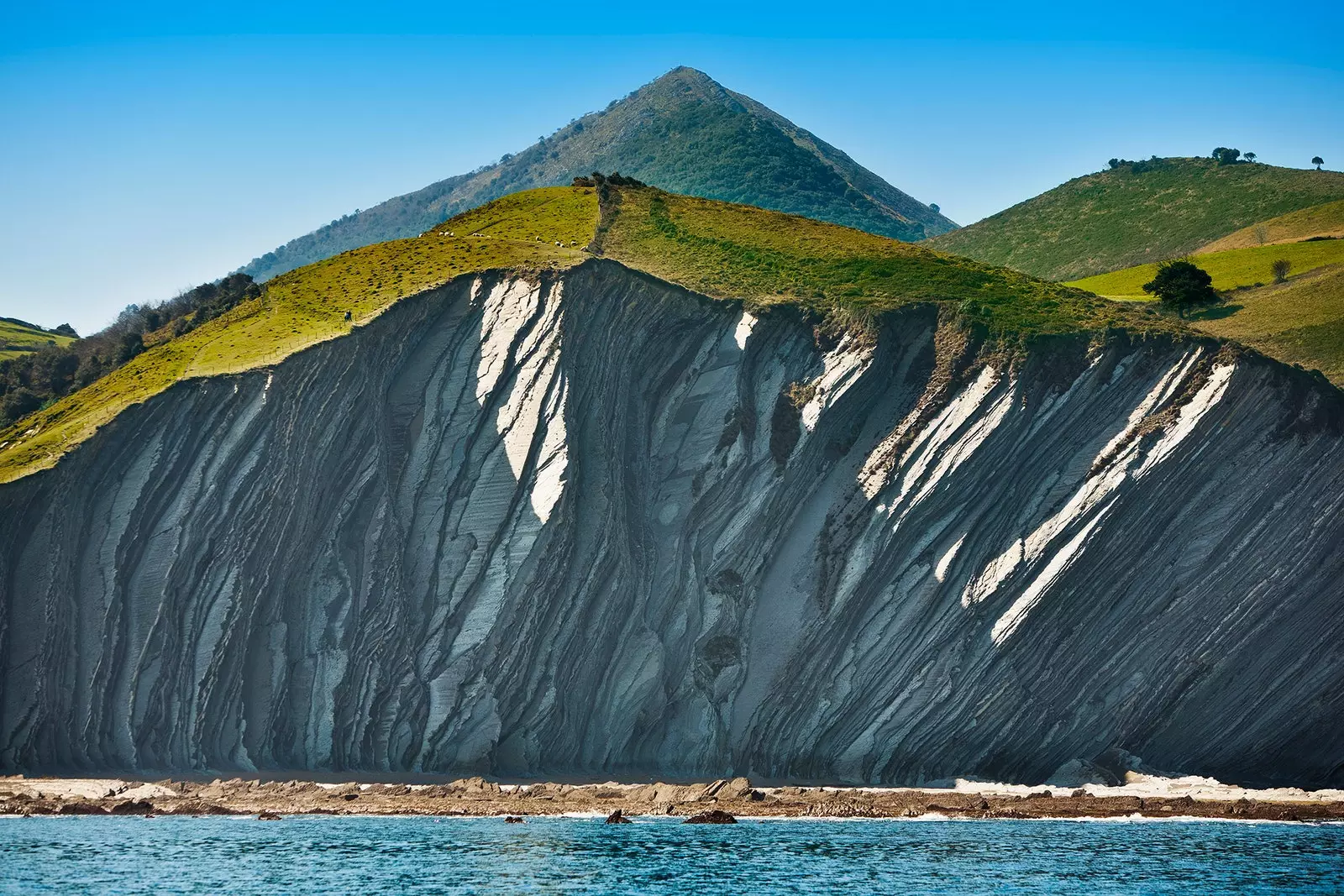
A show, whichever way you look at it
The coast between Deba and Zumaia is intricate , and no road runs parallel. Exists a very well marked trail that unites the different viewpoints, and that must be faced as if a real trek it was, because it is not a walk.
Therefore, for those who cannot undertake such a walk, the Basque coast can offer an alternative show , but no less valuable, walk from car
The road that connects Deba with Lequeitio It goes beyond the limits of the Geopark, but allows the visitor to understand the history of this coast beyond its superb geology. isolated region and constrained between the sea and the mountains , the towns that appear in our path, such as Deba, Ondárroa, Motrico or Lequeitio , are attached to narrow and shallow estuaries , enclosed by mountains that hide them from the sun and the winds.
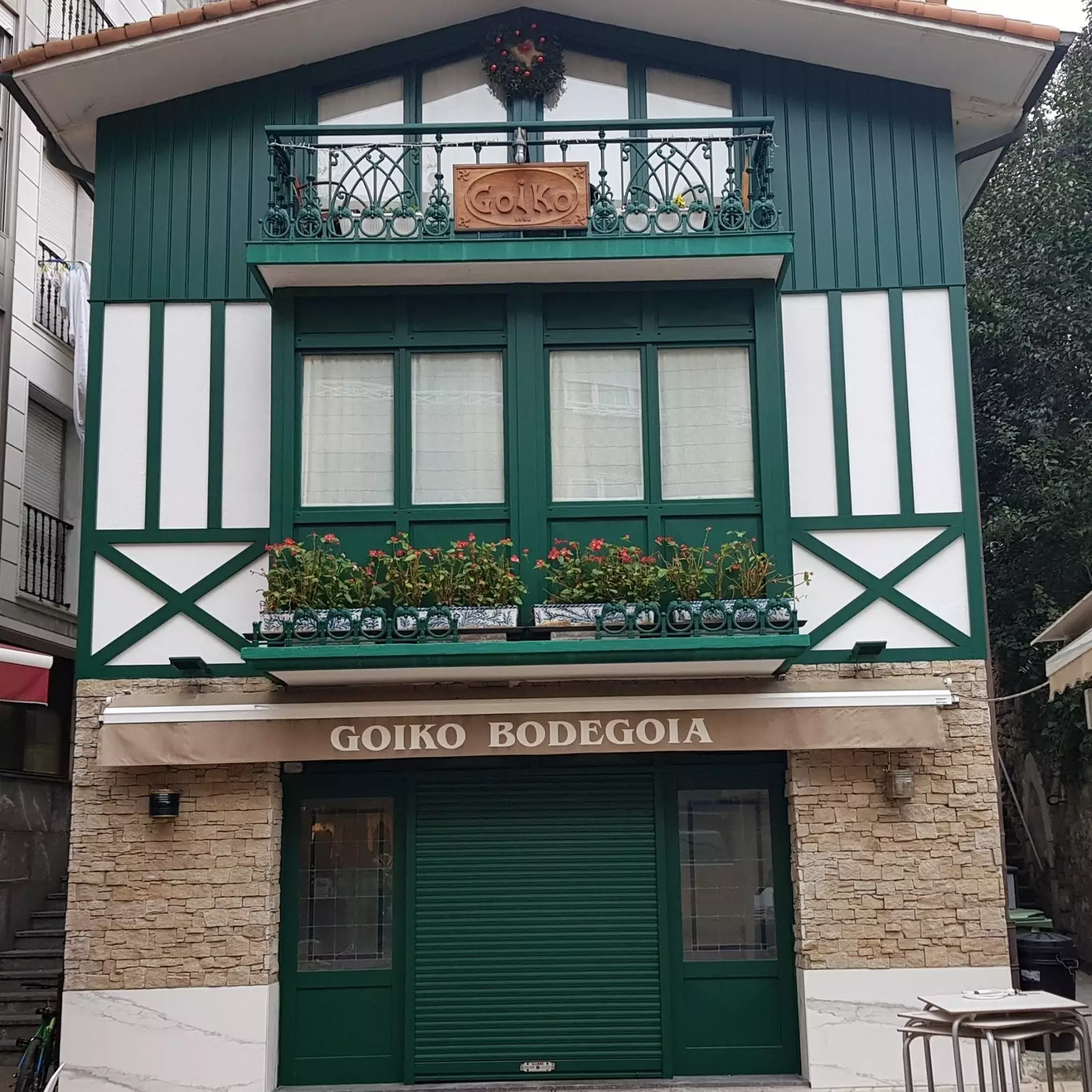
Make a stop at Goiko Bodegoia
So harsh were these lands, that both the medieval kings of Castile and Navarre They had to make great efforts in the form of tax exemptions for those who dared to populate the villages that we now visit. traditional farm, the farmhouse survives between beaches and cliffs , symbol of a rural tradition which is still going strong.
A good example is Txindurri Eturri, a farmhouse that functions as rural house and cider house , which has become agritourism banner in the zone.
Beyond bombastic words, Txindurri Eturri is a place where traditional ways of life, with a vegetable garden to take care of, a chicken coop to maintain , and a whole house as a place of management, trade and food , remain.
The Basque Coast Geopark attracts many customers to this farmhouse located on the outskirts of Itziar , and visiting it is part of the road map of those who want to know not only geographical history , but also, that of the inhabitants its environment.
